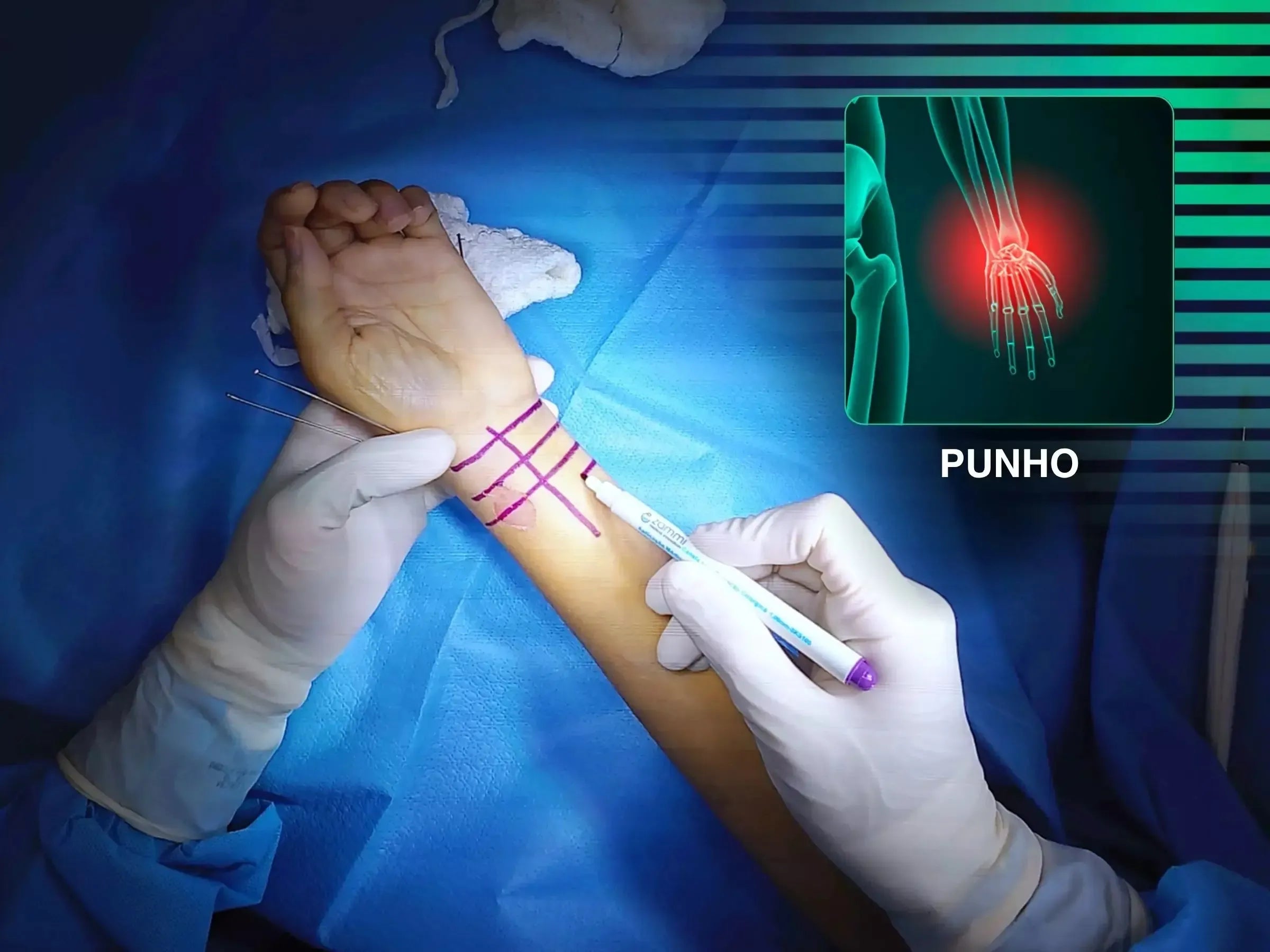
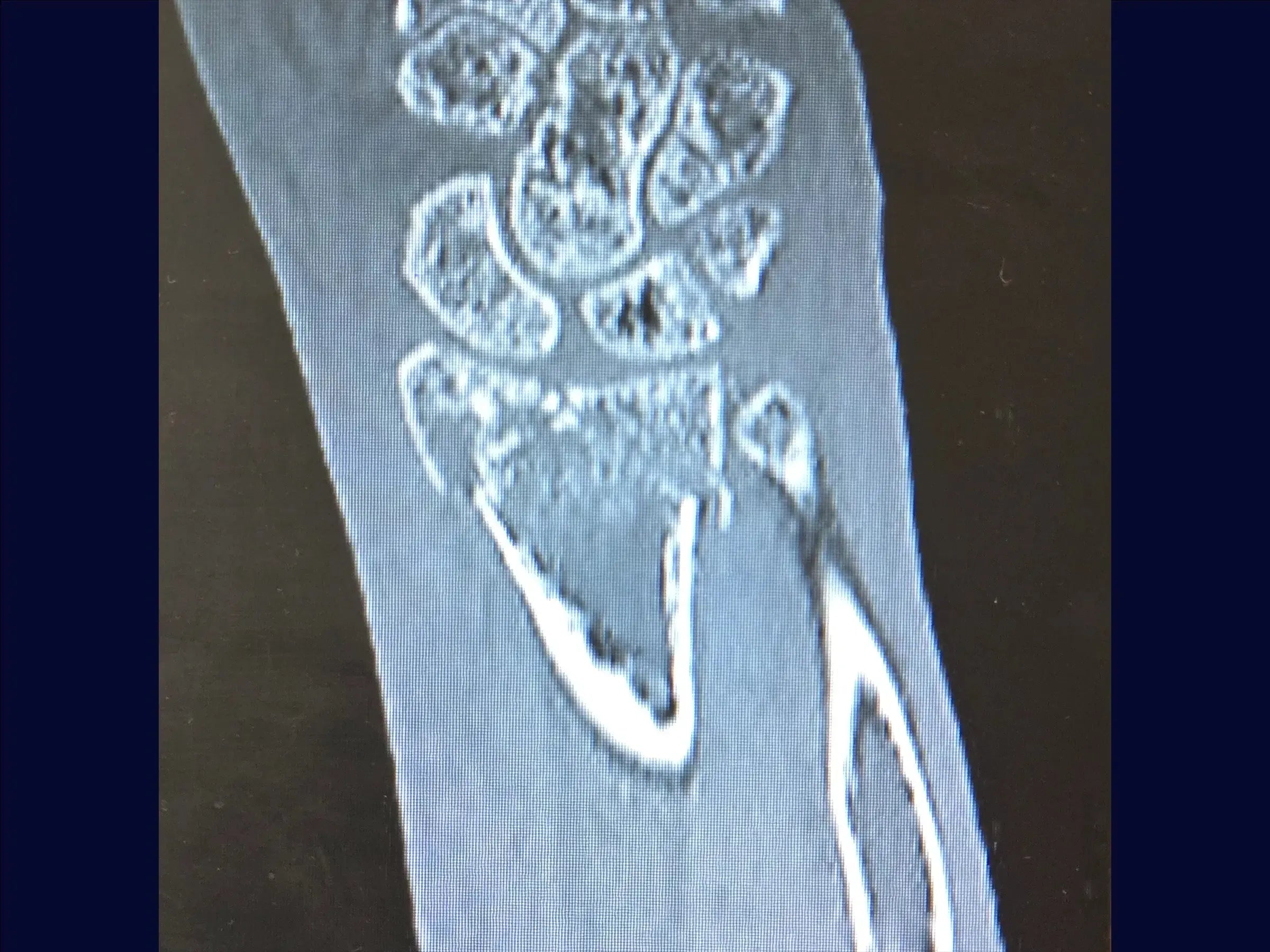
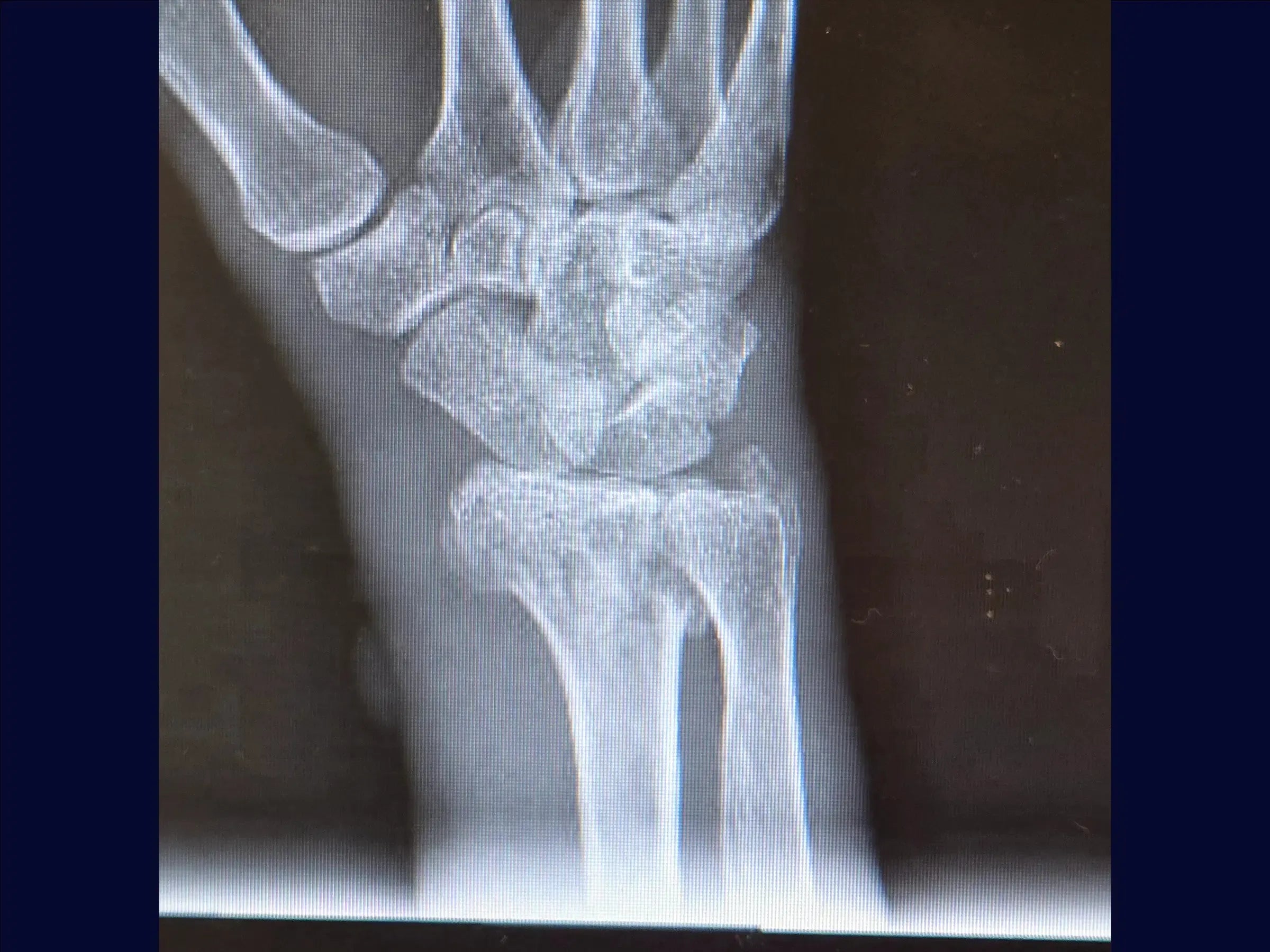

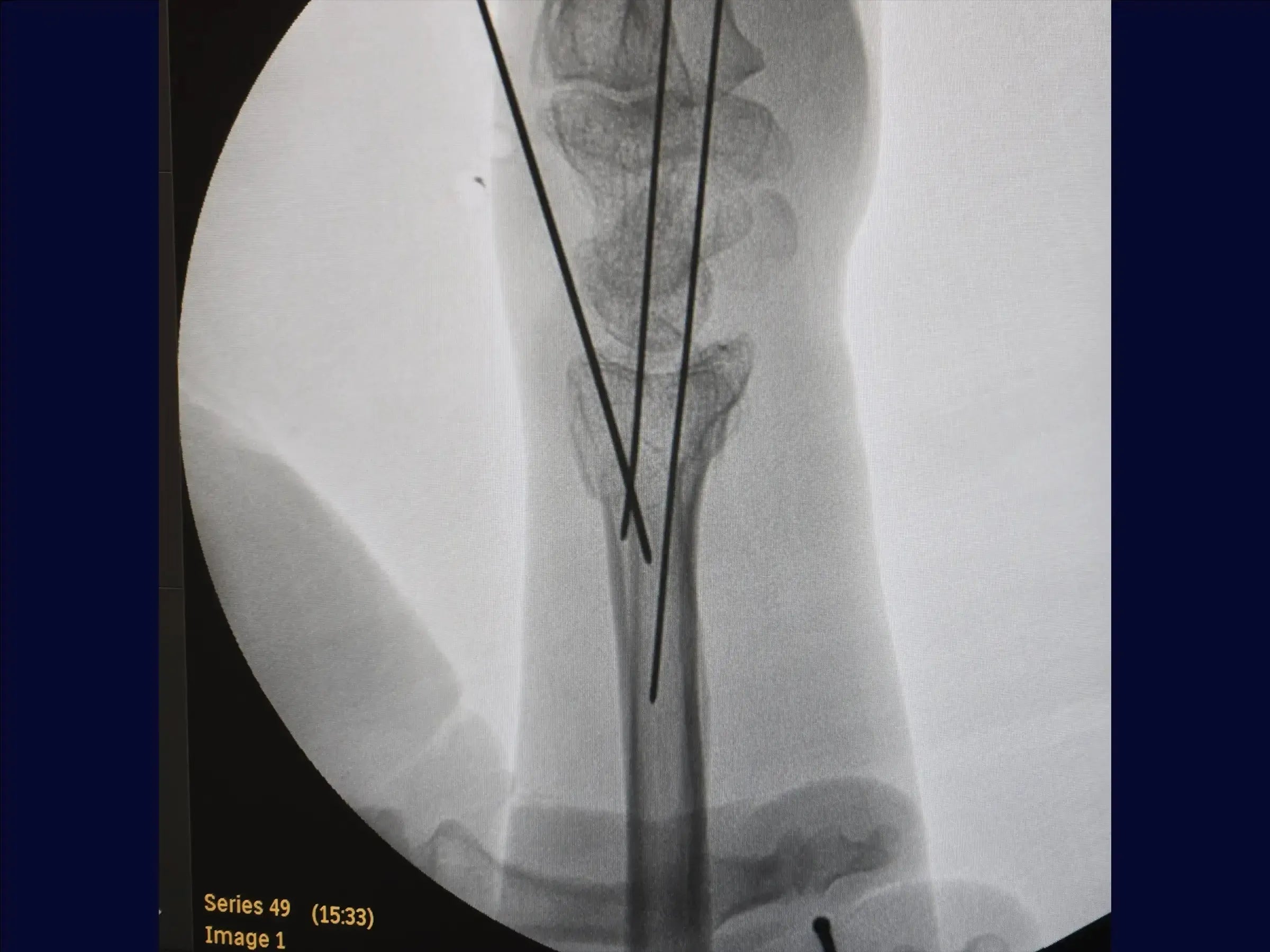
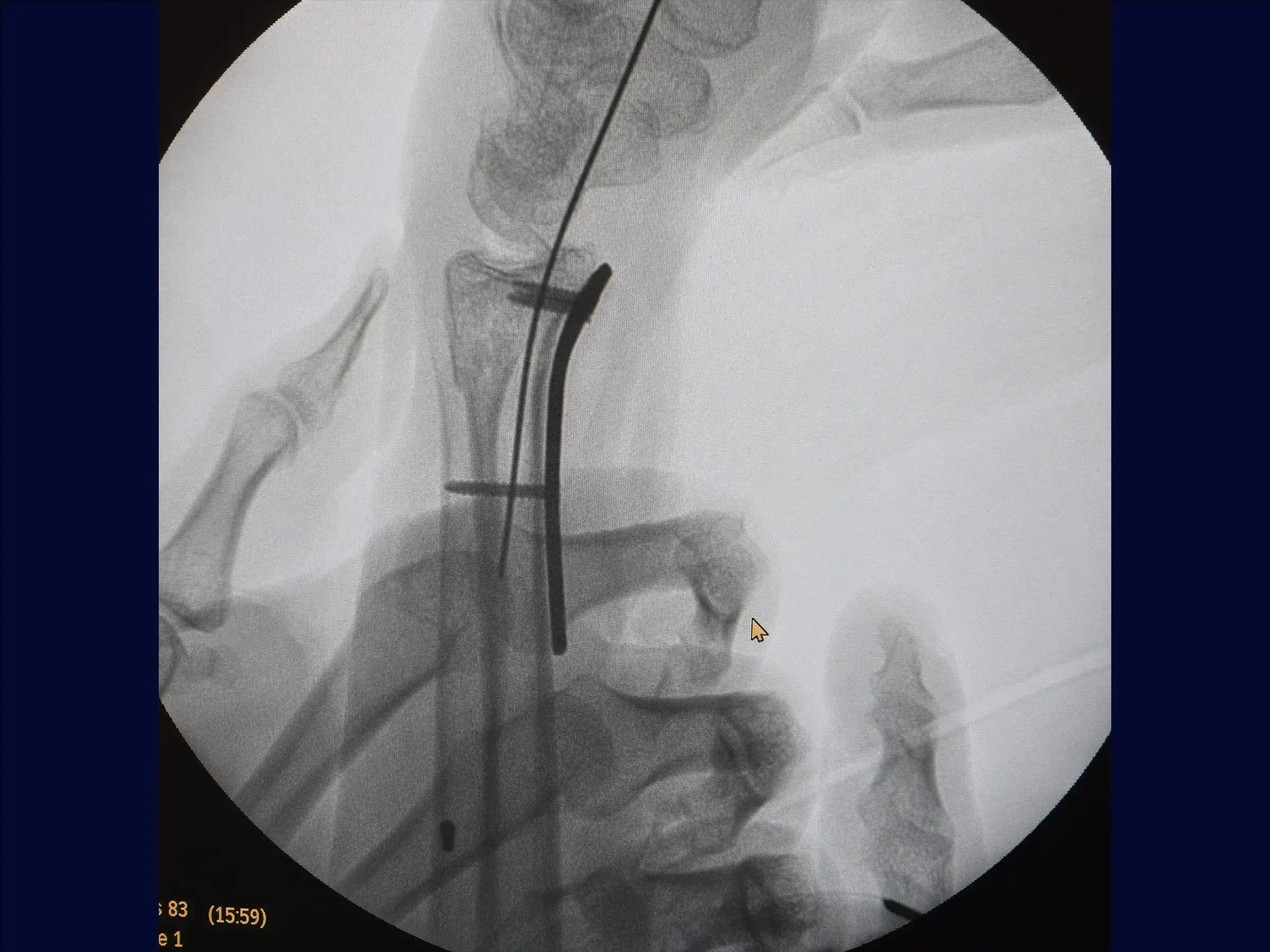



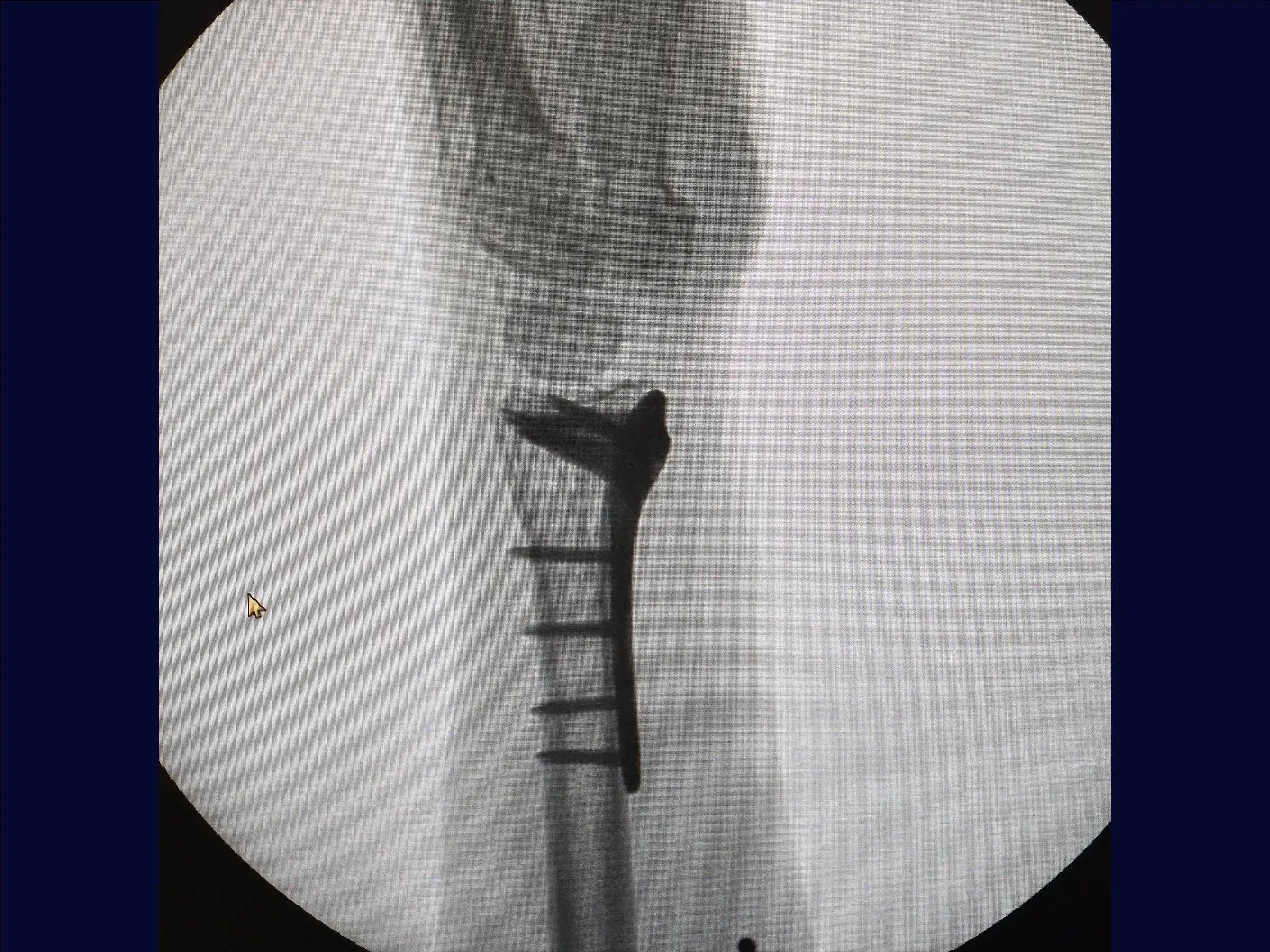
Multifragmentary Distal Radius Fracture (Volar Approach)
Master the treatment of complex radius fractures with a volar approach and 3D fixation without additional dorsal access.


Videos em 4k
Dublagem Profissional
Escolher opções











Descrição
Master the surgical treatment of multifragmentary distal radius fractures with this training focused on the volar approach. The procedure aims to restore radial length and joint congruence, using a combination of manual traction, provisional percutaneous fixation, and a strategy of volar plate fixation with screws of different lengths to stabilize the multiple fragments, including the dorsal component, without the need for additional dorsal access.
Training Focus:
- Treatment of multifragmentary distal radius fractures.
- Volar approach for reduction and fixation.
- Strategies to restore radial length and joint congruence.
- Volar plate fixation with screws of different lengths.
- Dorsal component stabilization without additional access.
Detailed Content:
- Assessment and Provisional Reduction: The training covers the analysis of images of the multifragmentary distal radius fracture and manual traction reduction (ligamentotaxis). It includes provisional percutaneous fixation with wires at the radial styloid and Lister's tubercle for fragment stabilization.
- Volar Surgical Access: Details of the incision, coagulation, and dissection of the planes. It teaches how to retract tendons (long flexor of the thumb and radial flexor of the wrist ulnarly) and protect the radial artery radially, for a wide approach. The fascia is sectioned linearly.
- Exposure of the Pronator Quadratus: The course covers the identification of the pronator quadratus and how to position retractors. A needle delineates the joint limit. Access to the pronator quadratus is performed in an L shape, with subperiosteal elevation to expose the fracture lines, observing the already reduced volar face.
- Volar Preparation and Fixation: The retractor is exchanged, the fracture vertices are cleaned, and the plate is introduced while respecting the joint limit. It begins with a cortical screw in the oval hole for compression. Short screws are used to fix the volar fragment, and with digital maneuvers, long screws stabilize the dorsal surface without the need for another access. The short screws are replaced with long ones (18–20 mm), including the styloid, concluding the osteosynthesis in the remaining holes.
- Closure and Final Results: The square pronator is sutured in a straight manner. The reduction is satisfactory, with the anatomy of the radius close to normal. The skin closure is performed for a satisfactory outcome.
Included Material:
- Detailed PDF: Covers provisional fixation, volar surgical access, exposure of the radius and plate implantation, and closure and final results. It also includes a practical summary of the procedure with the key points.
Enhance your skills in wrist surgery. Enroll now and master the techniques for treating multifragmentary distal radius fractures, ensuring functional restoration and stability for your patients.

